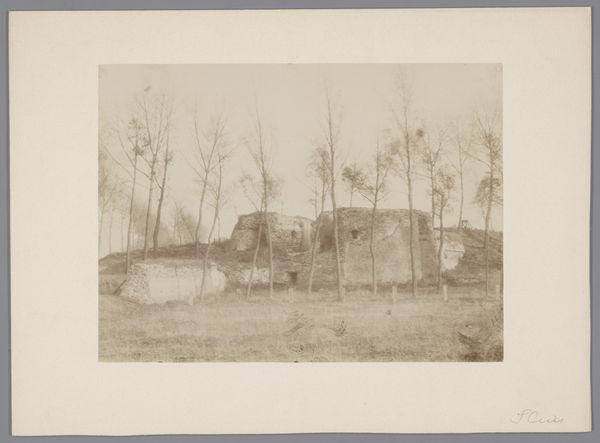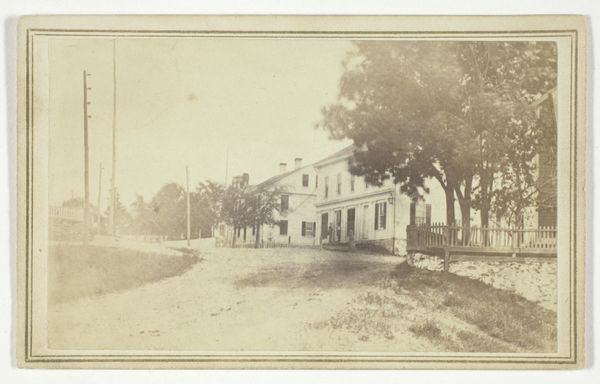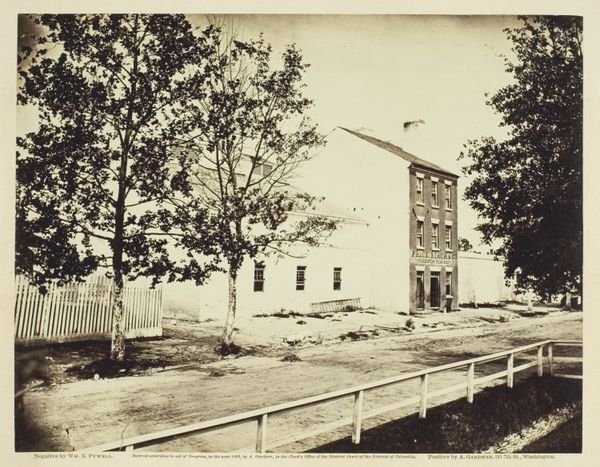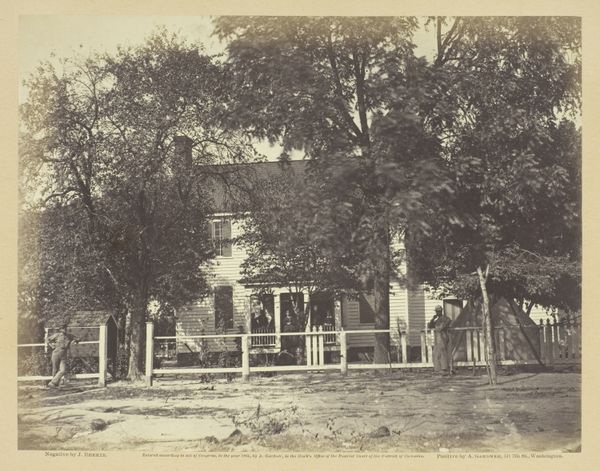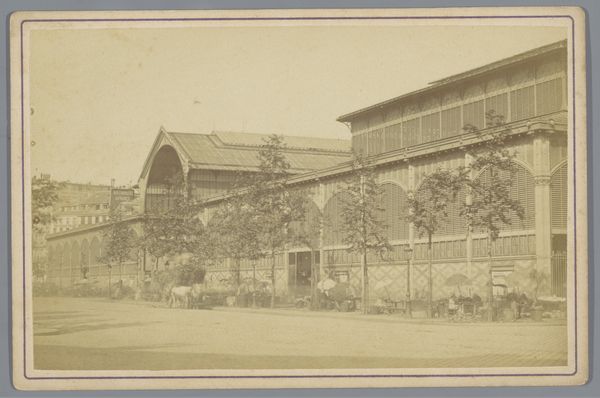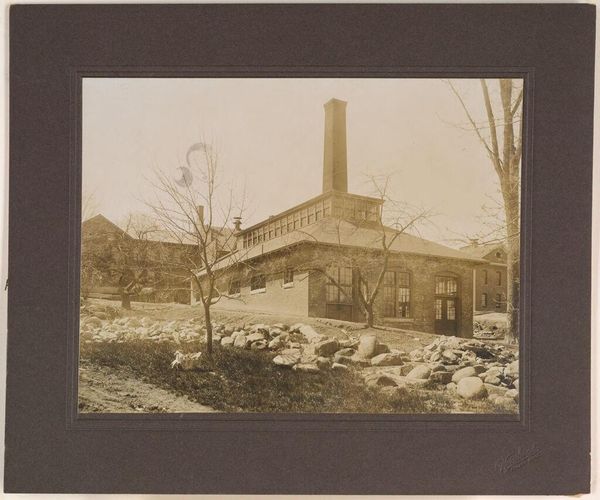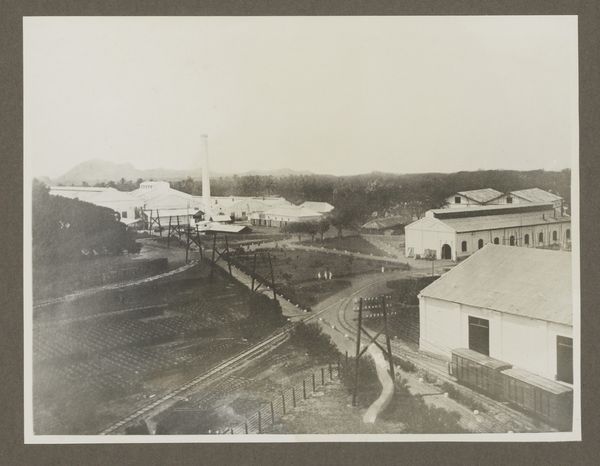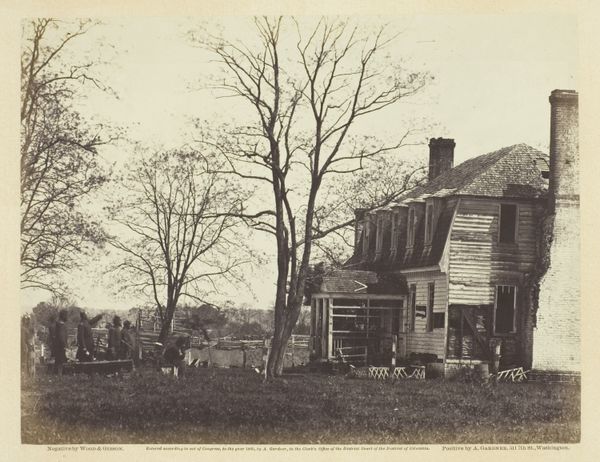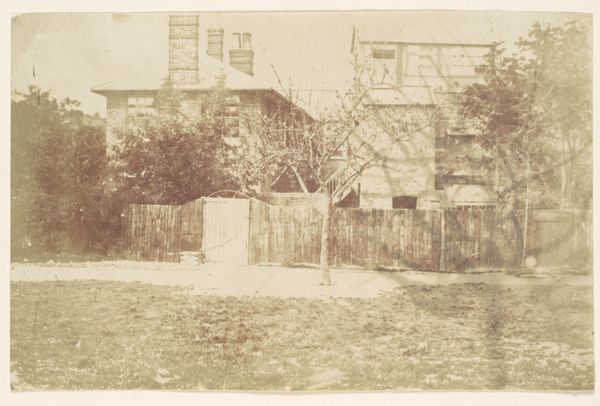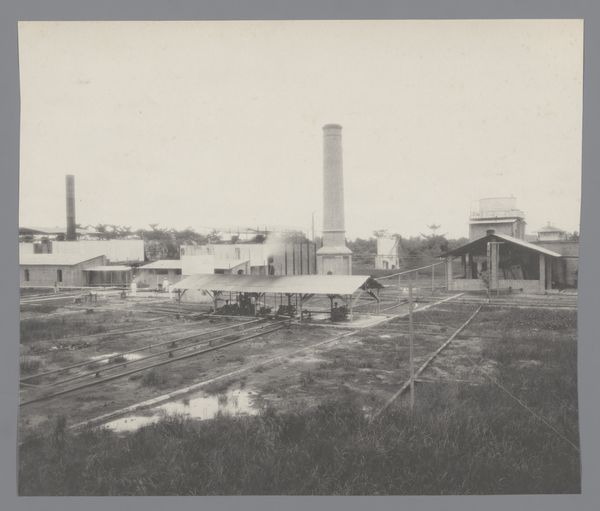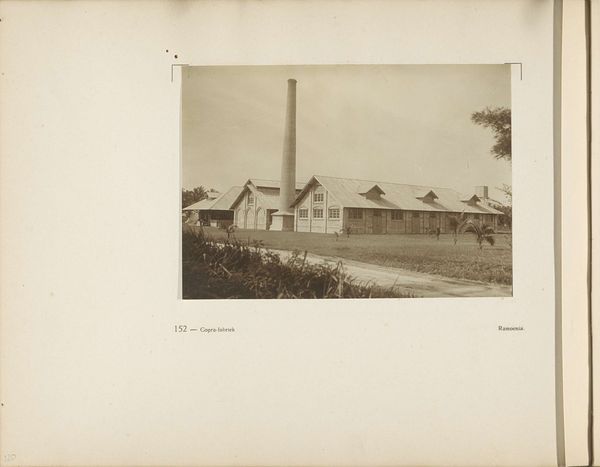![[Golestan Palace, Interior, Teheran, Iran] by Luigi Pesce](/_next/image?url=https%3A%2F%2Fd2w8kbdekdi1gv.cloudfront.net%2FeyJidWNrZXQiOiAiYXJ0ZXJhLWltYWdlcy1idWNrZXQiLCAia2V5IjogImFydHdvcmtzLzMwMTMxM2Y1LWRlZjktNGYyYy04YjBmLWZjN2FiNjViZDU5NC8zMDEzMTNmNS1kZWY5LTRmMmMtOGIwZi1mYzdhYjY1YmQ1OTRfZnVsbC5qcGciLCAiZWRpdHMiOiB7InJlc2l6ZSI6IHsid2lkdGgiOiAxOTIwLCAiaGVpZ2h0IjogMTkyMCwgImZpdCI6ICJpbnNpZGUifX19&w=3840&q=75)
photography, architecture
#
landscape
#
photography
#
ancient-mediterranean
#
orientalism
#
architecture
Copyright: Public Domain
Editor: Here we have a photograph from between 1840 and 1869 by Luigi Pesce, called '[Golestan Palace, Interior, Teheran, Iran]'. The tones are soft, almost dreamlike, and the building itself is partially obscured by trees. It creates an interesting tension between revealing and concealing. How do you interpret this work, considering the way the photograph is composed? Curator: It’s fascinating how Pesce uses the layering of elements, specifically the trees, to fragment our view. Note how the stark verticality of the bare trees contrasts with the horizontality of the Palace's architecture. This creates a complex interplay of lines and shapes that dominates the composition. Consider the tonal range too: the limited palette focuses our attention on these forms, emphasizing the structural relationships rather than the descriptive details. Editor: I see what you mean about the emphasis on form, it almost flattens the image, pushing the architecture and trees onto a single plane. Why do you think Pesce chose to depict the palace this way, prioritizing structure over a clearer, more descriptive view? Curator: Perhaps Pesce aimed to deconstruct our perception. By obscuring the palace, he forces us to actively engage with the visual elements - the lines, shapes, and tonal variations - rather than passively receiving a straightforward representation. He could also have aimed at documenting how nature integrates itself to architecture. What do you think this achieves aesthetically? Editor: That makes sense. It definitely shifts the focus from the palace as a historical artifact to a study of form and composition. I hadn't considered that level of intentionality. Curator: Precisely. Through the intrinsic qualities of the image, the structures and compositional balance become the subject itself, pushing beyond mere representation. Editor: I appreciate how you highlighted the formal elements at play, drawing attention away from the purely representational aspects of the photograph. Curator: And you astutely observed the flattening effect. It reminds us that a photograph, despite its apparent realism, is always a constructed reality, a manipulation of form and light.
Comments
No comments
Be the first to comment and join the conversation on the ultimate creative platform.
